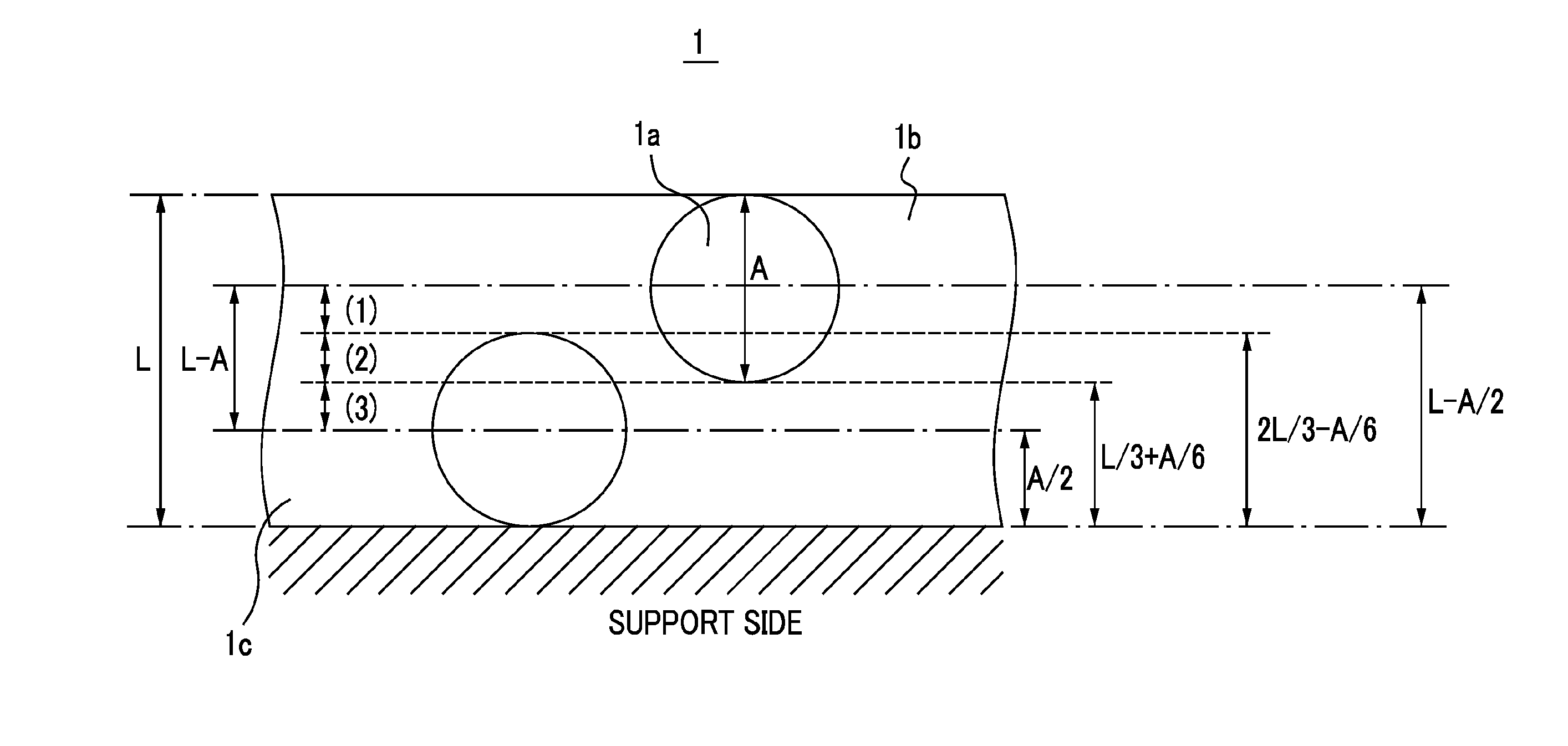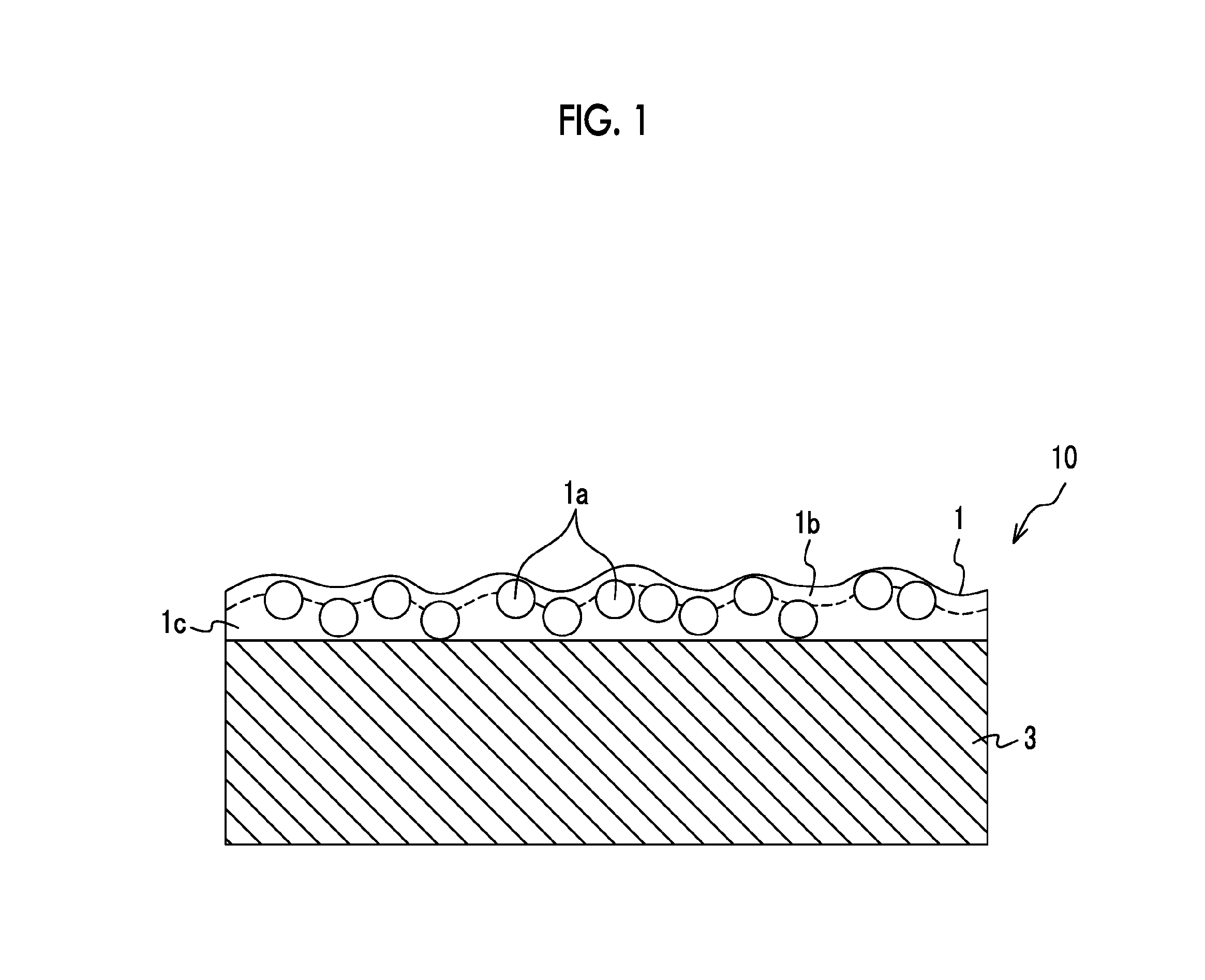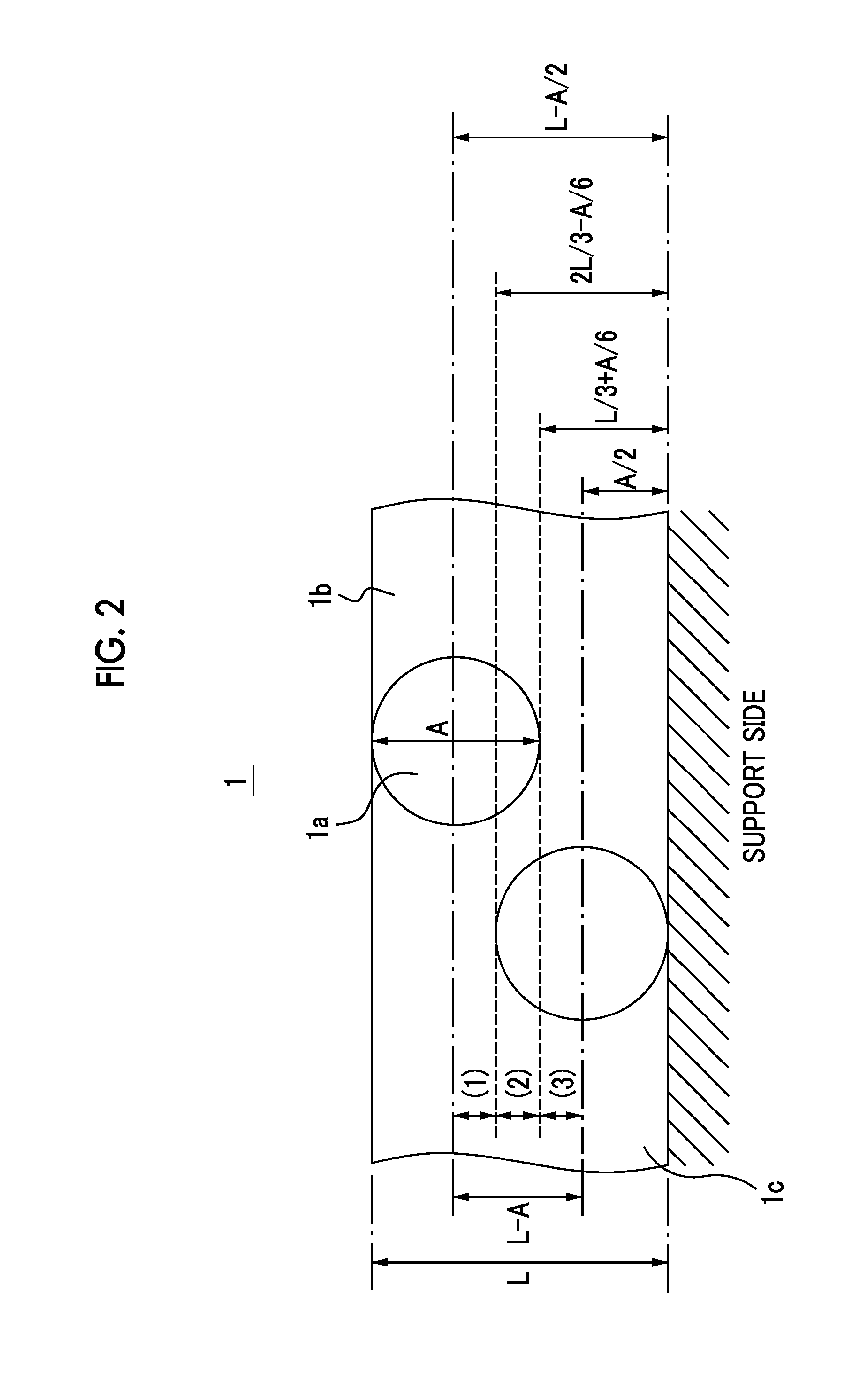Method for producing optical film
a technology of optical film and optical film, which is applied in the direction of optical elements, instruments, diffusing elements, etc., can solve the problems of difficult production of optical film, reduced light-transmitting particle productivity, and high cost of light-transmitting particles, and achieves low production cost and low point defects
- Summary
- Abstract
- Description
- Claims
- Application Information
AI Technical Summary
Benefits of technology
Problems solved by technology
Method used
Image
Examples
examples
[0391]The invention will be described in more detail below with reference to Examples, but the invention should not be construed as being limited thereto. Further, unless otherwise specifically indicated, the “parts” and “%” are on the mass basis.
[0392]The coating liquids for antiglare layers used in the present Examples are shown below.
[0393](First Coating Liquid)
[0394]
Composition of first coating liquid 1PET-3023.0 parts by massVISCOAT 36013.8 parts by massMX-600 (light-transmitting particle: average 2.7 parts by massparticle diameter 6.0 μm)SSX106FB (light-transmitting particle: average 2.7 parts by massparticle diameter 6.0 μm)IRGACURE 127 1.9 parts by massSP-13 0.1 parts by massPolymethyl methacrylate (20%) 5.2 parts by massMethyl isobutyl ketone27.3 parts by massMethyl ethyl ketone23.3 parts by mass
[0395]
Composition of first coating liquid 2PET-3015.9 parts by massDPHA 9.5 parts by massSX-350 HL (light-transmitting particle: average 15.8 parts by massparticle diameter 3.5 μm...
PUM
| Property | Measurement | Unit |
|---|---|---|
| particle diameter | aaaaa | aaaaa |
| particle diameter | aaaaa | aaaaa |
| thickness | aaaaa | aaaaa |
Abstract
Description
Claims
Application Information
 Login to View More
Login to View More - R&D
- Intellectual Property
- Life Sciences
- Materials
- Tech Scout
- Unparalleled Data Quality
- Higher Quality Content
- 60% Fewer Hallucinations
Browse by: Latest US Patents, China's latest patents, Technical Efficacy Thesaurus, Application Domain, Technology Topic, Popular Technical Reports.
© 2025 PatSnap. All rights reserved.Legal|Privacy policy|Modern Slavery Act Transparency Statement|Sitemap|About US| Contact US: help@patsnap.com



